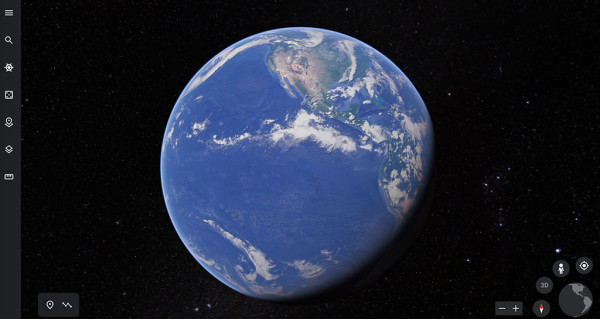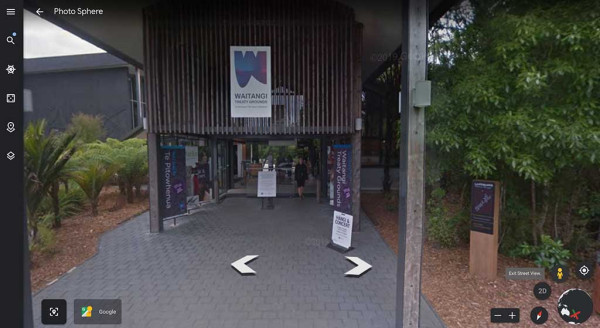Powerful storytelling using Google Earth for web
Google Earth - Storytelling
Most people would tell you they love a good story. Stories can change our attitudes, help us form opinions and even inspire us. Many educators use storytelling to create engaging and emotional connections for learning.
LEARNZ has been creating and sharing great stories through virtual field trips for over 20 years. Our stories are about people, actions and places around Aotearoa, and abroad. These are captured using video, text (diaries), images and live web conferences, all published on the LEARNZ website.
Recently we have been exploring ways to create a more immersive and interactive experience for learners and teachers. This has included the use of creation tools in Google Earth for Web. Creation tools are free for teachers and ākonga to use to support personalised learning, including inquiry, project and place-based learning. They are a great resource for teachers and students to explore and present New Zealand history, for example.

Image by CORE Education, all rights reserved.
What are creation tools on Google Earth for web?
Creation tools enable interactive map-based storytelling, using geospatial technology, satellite and 3D imagery and are integrated with Google Drive. They work on Chrome, Android and iOS, computers, tablets and phones. You can create placemarks, shapes and lines to showcase locations. Placemarks present a location as a satellite image or zoom right into a 3D street view. You can also attach text, images and video to each location, then organise, and collaborate on a story to create an immersive place-based narrative.
A recent example of a Google Earth for Web story created by LEARNZ is our Expedition Fiordland trip. This experience takes students from Te Anau airport by helicopter to the Pure Salt NZ M.V. Flightless vessel, where students are invited to explore the remote and rugged islands and the fiord in Tamatea–Dusky Sound.
Google Earth– LEARNZ Expedition Fiordland online field trip
How do we use Google Earth creative tools in our own classroom?
Explore:
- Open Google Earth to find out more about this application and its potential use.
- Launch Google Earth for Web. Then select from the creative tools in the panel on the left of the browser. Expand this panel to see more.

- Use the ‘Voyager’ option (ship steering icon) to explore current map-based stories from around the world.
- Search for locations, street views and Voyager stories that students are interested in. The Feeling Lucky option will take you to random destinations around the globe.
- Explore the LEARNZ Google Earth field trips and supporting resources on the LEARNZ website to see how we have created narratives around places, people and their inspiring stories:
- LEARNZ River Restoration tour– supported by its online field trip resources
- LEARNZ Rail Safety tour– supported by its online field trip resources
- LEARNZ Climate change tour– supported by its online field trip resources
- LEARNZ Expedition Fiordland tour– supported by its online field trip resources
Create
- Select 'projects' to create a map-based story

- Select the ‘New project’ button. You will be asked to create a project in Google Drive, so it’s important to ensure you are signed in to the correct Google account. This is because Google Earth will integrate with this drive. There are a number of ways to start and create files, but we’ll just outline one way.
- Projects provide you with the ability to ‘Search’ to add a place, ‘Add a placemark’, ‘Draw a line or shape’, or ‘Create a fullscreen slide’. Have a go with the various options or watch the tutorial accessible via this panel.
- Select the small person icon on the bottom right of your browser to go into a street view of a location. This provides an immersive 3D experience of a place. In the image below, we are visiting the Waitangi Treaty Grounds museum:

- Select the ‘Edit’ feature on a place you have saved and have a go at adding video, uploading images and writing descriptions to create your story about a location. There are a range of features you can use to make your story more engaging and immersive.
LEARNZ uploads videos for each online field trip in two foundation platforms so we can embed video into other LEARNZ online spaces:
- LEARNZ on Vimeo (1,900 LEARNZ field trip videos for teachers and students that are free to use)
- LEARNZ on YouTube (New)
To add video into a Google Earth story, you will need to upload them onto a YouTube account. LEARNZ does this using the same Google account that we use for our Google Earth tours. This keeps everything in a central location.'
Present and share
Share the link to our Google Earth story in ‘Present’ mode. If you have used images and video other than your own, ensure they have a Creative Commons license before sharing. When presenting and sharing your own or your students’ material to a wider audience, you may want to consider applying a Creative Commons licence to content you and they create.
Find out more about Creative Commons licencing
Another thing to consider when creating and sharing place-based stories is mātauranga, intellectual property and correctness, especially when it concerns the interests and rights of mana whenua. It is important to do your research and connect, and consult with key people as required. This could present a good learning opportunity for both you and your students.
There is so much more to this tool than presented in this blog post!
The best way to discover its potential is to have a play. Better yet, let your learners have a go. The LEARNZ team believes Google Earth for Web provides a user-friendly platform that supports engagement, personalised learning and key competencies, and it can be adapted to suit virtually any topic or interest. It is also an immersive way to tell the stories about places, people, initiatives, culture and history in Aotearoa.
LEARNZ online field trips:
Virtual Experiences - for Aotearoa (New Zealand) schools
LEARNZ is a programme of free virtual field trips, helping students access the inaccessible. Visit inspiring places around Aotearoa, Antarctica and beyond. Let us take you there!
Explore more content
Explore our wide range of education related podcasts and blogs, ranging from experts discussing Kaupapa Māori, Cultural capability and te reo Māori, Leadership, Pacific viewpoints, Digital and innovation, Inclusive learning and more.